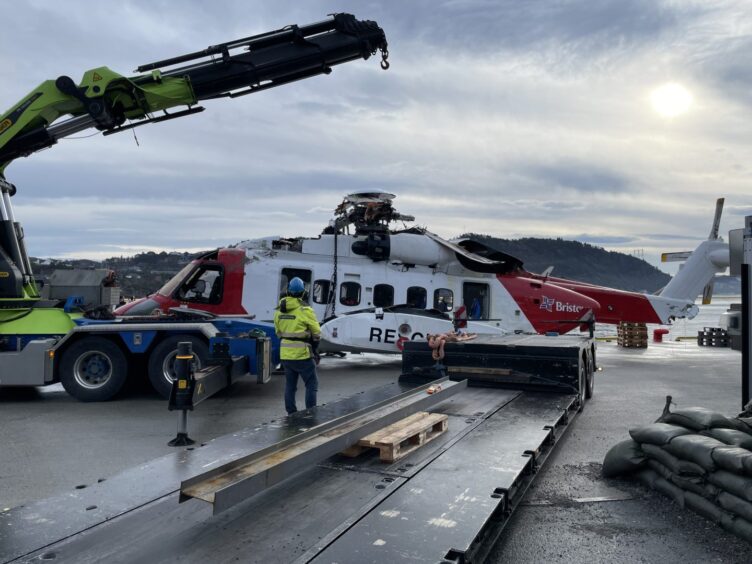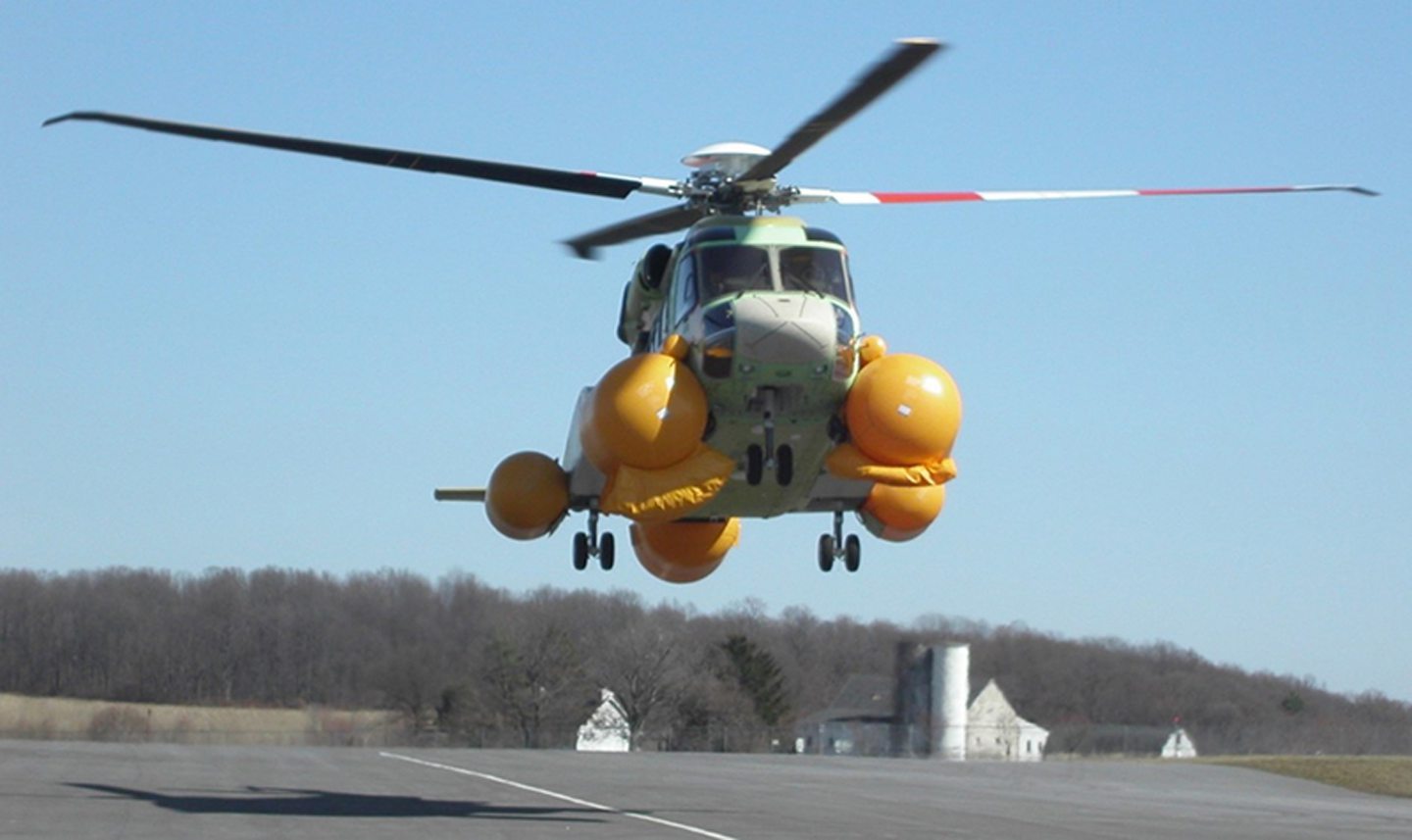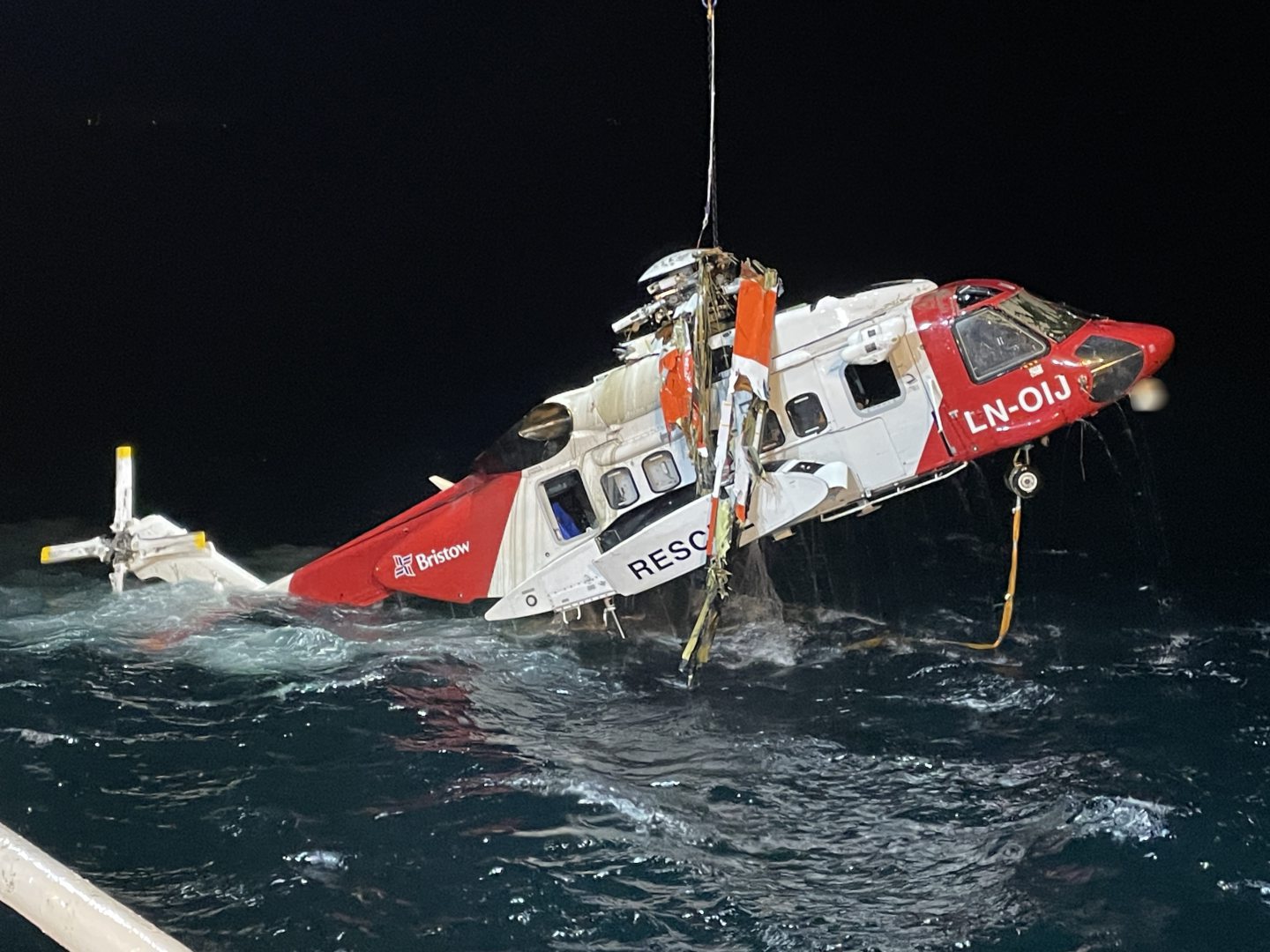
Investigators are working to determine why emergency floating batons did not deploy on a helicopter which ditched off the coast of Norway last week.
61-year-old Equinor employee Reidun Hestetun died and five others were injured when the Sikorsky S-92 search and rescue (SAR) helicopter crashed during a training exercise.
Investigators recovered the wreckage of the Bristow-operated helicopter, including its ‘black box’ flight recorder, from a depth of 220 metres after it sank to the sea floor following the crash.
The S-92 is equipped with float batons which are designed to be deployed automatically upon impact with the sea.
However, the Accident Investigation Board of Norway (AIBN) said today that despite the floating batons being armed, they did not deploy following the crash.
The AIBN said the S-92 flotation elements are “designed for a controlled emergency landing on water”.
“Although the accident appears to have had limited energy impact with the sea, it cannot be characterised as a controlled emergency landing,” the AIBN said.
“The fact that the floats were not released could be because the situation which arose was beyond the situation’s limitations.
“The Accident Investigation Board cannot therefore conclude that there is a technical fault with the floats”.
An aviation consultant told Energy Voice that floats on the S-92 have to be armed when over the sea and travelling below a speed of 80 knots, and de-armed when travelling faster than 80 knots.
They said that this appears to confirm the crew had armed the floats in preparation for the Search and Rescue exercise, but the devices did not deploy upon immersion in water as they should have.
‘No significant findings’ so far
The AIBN said its investigation into the accident is still at an early stage, with analysis of the helicopter’s flight recorder ongoing.
Investigators sent the flight recorder to England for analysis earlier this week and data has already been extracted, however the AIBN said the work is expected to take a “long time”.
The AIBN said it has now interviewed all five men who survived the accident, and together with flight recorder data “this is important information in order to understand why the accident could happen”.
“So far, no significant findings have been made affecting immediate aviation safety,” the AIBN said.
The AIBN said all findings will be immediately communicated to the UK’s Civil Aviation Authority and the European Union Aviation Safety Agency, as well as the National Transportation Safety Board in the United States.
Investigators to look at rescue operation
The investigation will also consider the survivability of the accident, including the helicopter and crew’s equipment, evacuation options and the rescue operation itself.
Earlier this week, Norwegian authorities confirmed the six people aboard the helicopter were picked up from the sea in two separate rounds by two different rescue helicopters.
The five men were initially pulled from the sea by the crew of the SAR Queen rescue helicopter when it arrived on the scene.
According to Norwegian media, fuel shortages forced the SAR Queen crew to make the decision to return to base before retrieving Ms Hestetun.
As a result, Ms Hestetun remained in the sea for another 25 minutes before the next helicopter arrived at the accident site from Florø.
Norwegian authorities did not say what condition Ms Hestetun was in, but she was pronounced dead at Haukeland Hospital and a preliminary autopsy has been completed.
In a statement, Norway’s Joint Rescue Coordination Centre (JRCC) operational rescue inspector Andreas Næsheim said the rescue crew determined it was necessary “to go to Haukeland (Hospital) as quickly as possible with the five people who had been taken on board the helicopter at that time”.
“Based on the knowledge we have now, it is reasonable to assume that these assessments have helped save lives,” Mr Næsheim said.
The accident has caused concern among the offshore workforce in Norway and the UK, with one union leader calling for alternative options to helicopter transit for workers.
Recommended for you


 © Image: Sikorsky
© Image: Sikorsky © NSIA
© NSIA